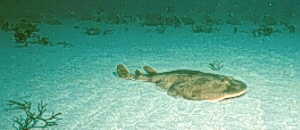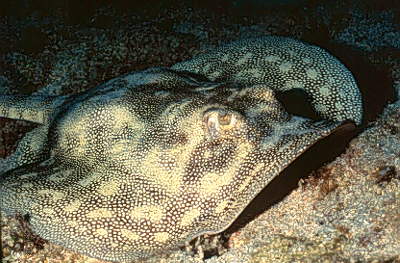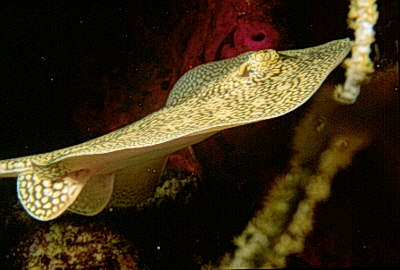
- Other Issues
- >> Sand Dwellers Issue
- >> Sand Dwellers
Sand Dwellers
 | Atlantic Stingrays bury themselves in the sand. Their camoulflage is good, but predators like the Hammerhead Shark evolved the hammer shapped sensory equipment (which they get their name from) to increase their ability to resolve their favorite prey as it lies hidden in the sand. |
 | Stingrays can be approached closely by divers, but be careful not to annoy them, as they can reach their "diver tolerance limit" on a busy day and do a quick spin with a tail charge in your direction--you won't want this to happen... |
 |
A much rarer find is the Caribbean Torpedo Ray. If you do see one, DO NOT TOUCH!!! They can and will deliver a powerful electric shock if molested. |
 |
Yellow Stingrays are usually found in the sand, well covered. They are considerably smaller than the Atlantic or Southern Stingray.... |
 |
....And while you should never harass marine life, they do look pretty cool when they are flying! |
| Thanks for visiting our Sand Dwellers Issue, and please let us know what other types of creature specials you would like us to do. Just send us e-mail with a subject header like: "SFDJ Creature Feature", and then add in your ideas. You can use this form to send us the e-mail, by clicking here.. |
| [ HOME ] - [ PREVIOUS PAGE ] - [ ABOUT ] - [ DIVE INSTRUCTION ] - [DIVE BOATS, DIVE STORES, & HOTELS] [ EQUIPMENT MANUFACTURERS] |
| This feature is sponsored in part by: |
 |